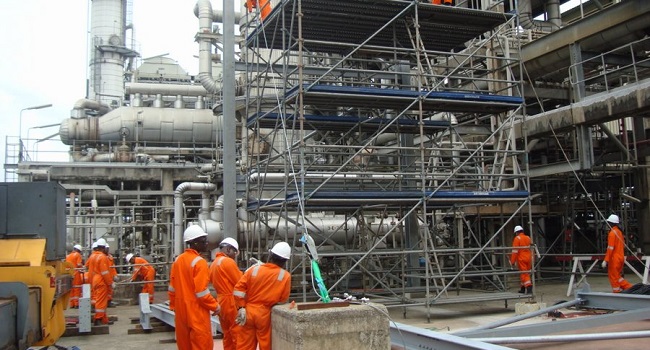Business
Oil and gas sector responsible for most non-performing loans in Nigeria- Report

The bulk of non-performing loans from commercial banks in the country have been traced to oil and gas companies.
These companies include upstream, midstream, downstream and the supply chain of the oil and gas sector, according to a report by the Financial Times.
The report titled, ‘Investing in Nigeria’, stated that most of Nigeria’s commercial banks have their fortunes tied to fluctuations in global oil prices considering that about a third of all credits they extend to the economy are directed to operations in the country’s oil and gas industry.
The report, which chronicled developments in Nigeria’s economy and politics ahead of the 2019 general elections, explained, among other observations, that analysts estimate that about half of the loans of commercial banks in Nigeria were given for upstream, midstream, and downstream oil and gas operations and the supply chain, adding that rising levels of Non-Performing Loans (NPLs) of the banks were traced to the oil sector.
According to the report, while the rally in the price of oil over the past year is far from a universal benefit to Nigeria’s economy, which is dependent on crude oil revenue but cannot meet domestic fuel demands from its own supply, it has been good for the banks.
Read also: BPE says privitisation has freed up $3bn consumed by public enterprises annually
“The rise has come as a welcome respite for the country’s banks, whose fortunes are tied to fluctuations in the oil market.
“About a third of all domestic commercial bank credit is extended to the oil and gas industry. If its entire upstream, midstream, and downstream operations and supply chain were added together, analysts estimate oil and gas lending would make up as much as half of bank’s loan books.
“The system-wide non-performing loan ratio – a key metric for bank’s health – fell to 12.5 per cent in June from 15 per cent a year earlier, according to official figures. But by August, it had risen to 14.7 per cent.”
The report also indicated that the Central Bank of Nigeria, CBN, Monetary Policy Committee, MPC, had in a recent communiqué said it was, “concerned with the rising level of NPLs in the banking system, traced mainly to the oil sector.”
The report added that while top tier banks such as First Bank are generally improving, recovering from a slump that saw its NPLs peak at 24.4 per cent at the end of 2016 after being down to 20.8 per cent at the end of June, other smaller banks are still struggling with some even relying on the CBN to stay afloat.
Join the conversation
Support Ripples Nigeria, hold up solutions journalism
Balanced, fearless journalism driven by data comes at huge financial costs.
As a media platform, we hold leadership accountable and will not trade the right to press freedom and free speech for a piece of cake.
If you like what we do, and are ready to uphold solutions journalism, kindly donate to the Ripples Nigeria cause.
Your support would help to ensure that citizens and institutions continue to have free access to credible and reliable information for societal development.
























